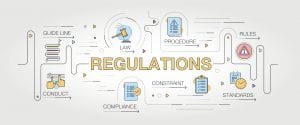By Rich Hamilton, Director of Marketing & Product Development
It’s said that the heart and soul of most companies is their Inbound Contact Solutions operation (also known as an inbound call center). This vital department with an organization has an opportunity to get key customer insights and the call center interactions often make or break the customer relationship.
Author note: When I refer to inbound contacts, I’m talking about inbound voice contacts plus the other non-voice contacts that contact centers are responsible for handling, including email, text and chat.
Have you ever sat on hold, trying to call a company and finally gave up, never to interact with that company again? Making sure that your Inbound Contact Solutions operation is properly staffed is super important. Whether this is a first impression or an angry customer that is giving the company one last chance, each inbound contact can be vital.
Forecasting your call volumes and appropriate staffing/scheduled of your workforce is extremely important. Keep in mind that there are some very sophisticated algorithms used to forecast call volume and the needed workforce to answer those calls. I’ll focus more on the data that needs to be considered. Here is a list of the key data points used for forecasting and scheduling:
Key Data Points for Inbound Contact Solutions Forecasting and Scheduling
- Call volume
- Average Handle Time
- Absenteeism
- Service Levels
- Occupancy Levels
Now that we have list listed the key data points, let’s break these down and look at a few other considerations for workforce forecasting and planning for any inbound call center operation.
Inbound Contact Solutions Historical Data
Data is King! The best place to start is with data from the past. The more data you can get your hands on, the better. The key metrics to focus on will be call volume and average handle time. Look at these metrics by day, week, month and definitely time of day. If possible, instead of just looking at the last couple of months, look at the same time period over the last several years. This will help especially in industries where there are seasonal call volume changes (think Christmas time for anyone selling consumer products).
Looking at call volume and average handle time will give you a real good picture on the number of FTEs you will need in your inbound contact solution. This will get you about 80% there. There are still a few more factors that we will need to take into consideration in order to get the whole picture, which we will discuss in the following sections.
Don’t forget to look at absenteeism. You will need to know what percentage of your workforce may call out sick on a given day. This can be very hard to forecast but with enough data, at least you can forecast more precisely. For example, let’s say your call center needs to staff 20 FTEs for Monday. Based on your absenteeism, historically 1 person calls out sick on Mondays. Wouldn’t it be prudent to schedule 21 FTEs on Monday, so that when the 1 person calls out sick, you still have the right number of call agents to handle the expected call volume?
Future Events That Impact Inbound Contact Solutions Planning
Not only do you need to look at metrics from the past, but you also need to look at any events happening in the future that are out of the ordinary.
Marketing/Other Company Initiatives – The Marketing Department might plan to send out an email announcing a new product or a new promotion that they predict will increase call volume.
Weather – This one could be tougher, but this could affect you in a couple different ways. One would be if your industry relies on the weather. Maybe there will be extra snow forecasted over the next month and your call center takes ski resort reservations. The other way is how it affects your employees. Maybe increased snow means that your absenteeism will be higher than is normal. So, more employees will need to be scheduled to cover all the inbound calls.
Other Events – These events could be specific to an industry or only affect a specific group of industries and the amount of calls the call center will receive. One example could be a new federal law being passed that will affect a certain industry and the volume of calls they will receive. For example, when HIPAA was first implemented, I’m sure healthcare providers received more calls and the calls were longer than normal.
Management Expectations for your Inbound Contact Solutions Operation
Each call center will have specific metrics from management that need to be adhered to. These metrics will include service levels (percentage of calls to be answered within X amount of time) and occupancy levels (the percentage of time actively working on calls including talk time and after call work time). The higher the service level required, the more call center agents will be needed to answer phone calls. Higher occupancy levels mean you won’t need as many call center agents, but it also means agents will burn out faster and sometimes it is difficult to achieve higher occupancy levels and higher service levels if the call volumes are not consistent.
Other Considerations for Proper Forecasting Methodology in Your Contact Solutions Operation
And here are a few other considerations to keep in mind as you identify the inputs for forecasting and scheduling for your contact solutions operation.
Human Resources Policies: HR policies like required break and lunch times will impact your workforce management and scheduling plan. Obviously, there is a huge difference in scheduling when a call center agent has a 30-minute lunch versus a 60-minute lunch. HR policies which we would include union rules could dictate start and stop times for shifts, and possibly when the breaks would need to occur (after so many hours of work).
Agent Skills: If your call center has multiple departments, this adds another level of complexity. Calculating call volume and average handle time along with the other considerations will have to be done for each department because the skill required will vary most times vary from department to department. Call center agents that are cross trained is good to know when scheduling. Not that I am saying that you can count a call center agent for both departments if they are trained for both, but at times when one department is slow, and another is busy, knowing that a few agents can help with the overflow is helpful for scheduling.
Forecast and Workforce Management Resources: In my career, I have managed inbound contact solutions operations that were very large and very small. Typically, the larger the organization, the larger the budget for workforce management software and systems. Smaller inbound contact solutions operations typically get by with spreadsheets and elbow grease.
Here at QCS we use a combination of sophisticated forecasting software along with decades of inbound call center management experience to more accurately forecast call volumes and then schedule our staff accordingly. We take a blended approach in many instances so that inbound call center agents can make outbound calls when time permits. Do you have different forecasting considerations in your inbound contact solution? Please share them with me at rich.hamilton@qualitycontactsolutions.com.
Other Articles You Might Find Interesting:
Inbound Call Goals in Call Center Outsourcing
Ensure a 5 Star Call Center Outsourcing Experience
3 Reasons to Use the Text Channel in the Call Center
Rich Hamilton is the Director of Marketing & Product Development for Quality Contact Solutions, a leading outsourced telemarketing organization. Rich works tirelessly to bring new products to the teleservices and call center market. Rich is also the creative powerhouse behind executing on a wide spectrum of marketing initiatives for the organization. In addition, Rich is a telemarketing compliance guru with a Customer Engagement Compliance Professional (CECP) certification to back it up . Rich can be reached at rich.hamilton@qualitycontactsolutions.com or 516-656-5105.









